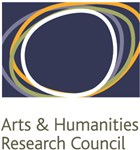Short term morphosyntactic change
Restan (1960) - STMC bibliography
Reference
Restan, Per A. 1960: The objective case in negative clauses in Russian: Genitive or accusative? Scando-Slavica 6. 92-112.
Summary
This article addresses the variation of the genitive and accusative cases on direct objects of negated transitive verbs, as in (1):
| (1) | My | ne | narušim | mir / mir-a |
| we | not | violate | peace[ACC] / peace-GEN | |
| ‘We will not break the peace.’ | ||||
The author reviews the conflicting claims in previous works on this phenomenon and aims for a more precise formulation of the distribution of genitive and accusative. He analyzes a sample of 2119 instances from fiction and journalistic texts from the period of 1918-1959. The sample is divided into four categories: narrative prose, dialogue, newspaper texts from 1918-1923, newspaper texts from 1959.
Restan uses his sample to evaluate various factors proposed by other authors. The paper is an early and impressive instance of the testing of previous suggestions with substantial statistics. The following factors are considered:
Properties of the clause
- indirect negation (ne mogut prinjat´ uslovij)
- double negation (ne možet ne vyzyvat´ trevogi)
- inversion (object – verb word order)
- type of the clause (imperative and interrogative)
- negative clauses with a predicative instrumental (ne sčital Rossiju sopernikom)
- partitive constructions
- intensive negation ( ne videl ni pal ´my, ni ščitov)
Properties of the object
- nouns ending in –a, -ja
- concrete, definite nouns
- proper nouns
- number value on the object
- pronouns as objects
- substantivised adjectives as objects
Properties of the governor
- verb aspect
- gerunds and participles as governors
- lexico-semantic class of the verb
Consideration is also given to discourse properties (narration vs. dialogue), and to stylistic differences, including the differences between individual authors.
The author concludes that although the genitive is prevalent in contemporary Russian, the accusative is making progress, expanding more intensively in the language of newspapers and more slowly in fiction. On the basis of his statistics, Restan states that the following factors particularly favour the accusative:
- negative clauses with a predicative instrumental
- proper nouns
- when the object is a concrete, definite noun
- interrogative and imperative clauses
- indirect negation
Texts investigated
Fiction 1923-1956
- Gor´kij M. Moi unversitety (1923)
- Zoščenko M. Nervnye ljudi (1927). Rasskazy i fel´etony (1956)
- Šoloxov M. Tixij Don, vol. 1, part 1. (1928)
- Kornejčuk A. Gibel’ è skadry (1933)
- Kataev V. Kvadratura kruga (1928), Doroga cvetov (1933), Otčij dom (1945), Syn polka (1945)
- Leonov L. Obyknovennyj čelovek. Lenuška. Našestvie (1942 -1943)
- Paustovskij K. Zolotaja roza (1956)
- Tolostoj A.N. Pёtr Pervyj, vol. 1, chapters 1-3 (1934)
- Simonov K. Dni i noči (1944), Russkij vopros (1946)
- Èrenburg I. Ottepel´ (1956)
Journalistic works
- Newspaper Izvestija 1918 – 1923
- Newspaper Izvestija 1959
Statistics
2119 examples collected from fiction and journalistic texts were divided into four groups of roughly similar size:
- narrative prose – 588 examples;
- dialog – 520 examples;
- Izvestija 1918 – 1923 – 507 examples;
- Izvestija 1959 – 504 examples.
Calculations were made for the four samples separately. Additionally, statistics for each author (groups 1 and 2) are derived. Calculations of the frequency of the genitive accusative under various conditions are made on the entire corpus.
Raw figures and percentages are presented.
Which data from the source were used
Statistics from the source are presented in the database in their entirety. The division into narrative prose and dialogue is treated as a division into direct/non-direct speech.
Project members
Prof Greville G. Corbett
Dr Matthew Baerman
Dr Dunstan Brown
Dr Alexander Krasovitsky
Dr Alison Long
Period of award:
September 2004 - May 2008
Funder
Arts and Humanities Research Council (AHRC) - RG/AN4375/APN18306
TOP

